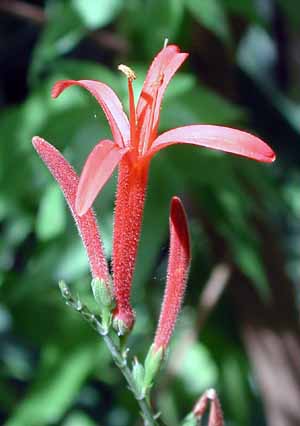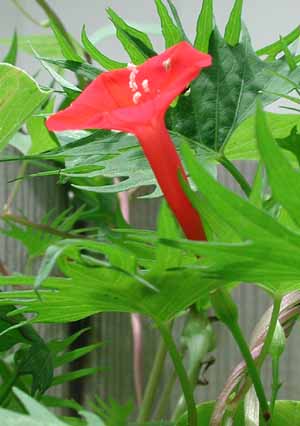I’ve been working on a new hummingbird pattern, a detail of the Columbian hummingbird pattern (AUD002), in the ongoing quest to have more small patterns. I approached it by taking the existing pattern and removing all but one hummingbird, flower, and few leaves and a piece of stem. Much to my chagrin, that little section uses ALL the colors of the larger pattern. I did manage to reduce the colors some, but it still uses a LOT of colors for what will be (I think) our smallest pattern yet.
As I worked on the pattern, thinking about hummingbirds going after nectar, I realized that I don’t actually know how flowers produce nectar, or which ones have a lot of nectar. (The only nectar flower I’m familiar with is Japanese honeysuckle — as kids, we used to pick the flowers, pinch off the base, and suck the nectar. Yummy!) I thought hummingbirds were primarily attracted to red, tube-shaped flowers. Maybe it’s the color more than the shape — I sometimes see hummingbirds checking out our orange cannas, which they apparently find to be a big disappointment.
Right outside my window is a hummingbird feeder and a flame acanthus, which just started started to bloom. The hummingbirds have been visiting the acanthus flowers and it’s cool to see them actually put their beaks all the way into the flowers, but they always seem to decide it’s too much work and go back to the feeder. The quamoclits are starting to bloom, finally, but they apparently are not good hummingbird flowers. The flame acanthus is a native plant, so maybe that has something to do with it. Here they are, flame acanthus on the left, quamoclit on the right. Both flowers are about an inch long (2.5 cm).



